#Gallos statue
Explore tagged Tumblr posts
Photo
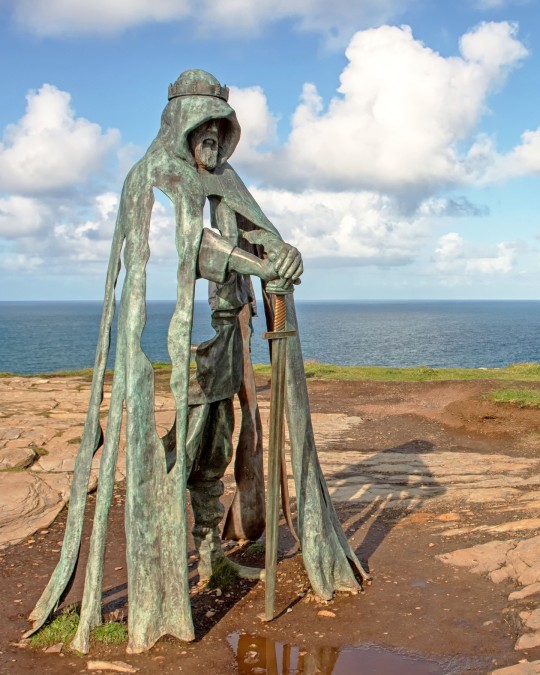


King Arthur at Tintagel
uniquedevontours
17K notes
·
View notes
Text

Sculpture of King Arthur located at Tintagel Castle, ENGLAND
#king arthur#rey arturo#sculpture#escultura#statue#estatua#tintagel castle#castillo tintagel#tintagel#tintagel island#isla tintagel#gallos statue#estatua gallos#sculptor#escultor#rubin eynon#castle cornwall#catillo cornwall#england#inglaterra#united kindom#reino unido#europe#europa
532 notes
·
View notes
Text

The statue of an ancient king stands guard at Tintagel in Cornwall
#Tintagel#Cornwall#Gallos#ancient king#warrior#coastline#Atlantic Ocean#modernist#statue#Kernow#Brythonic#UK
104 notes
·
View notes
Text

A GALLO-ROMAN GILT BRONZE MERCURY CIRCA 1ST-2ND CENTURY A.D.
According to Charles Delaporte's notes, the bronze was found after 1870 during an excavation near the town of Bavay, close to the border with Belgium. During the Roman period, Bavay, then known with the Latin name of Bagacum, was a fortified settlement of the Nervians, described by Julius Caesar as a tribe of fearsome warriors in his account of the Gallic War. The Roman town was founded in 20 B.C. by Marcus Vipsanius Agrippa, one of Augustus' most trusted generals, as part of the Gallia Belgica province. Due to its strategic position as a central node within the network of roads built by the Empire, Bagacum expanded rapidly, becoming one of the most important political and economical centers of the region, with imposing monuments such as a large forum, thermal baths and several temples.
#A GALLO-ROMAN GILT BRONZE MERCURY#CIRCA 1ST-2ND CENTURY A.D.#bronze#bronze statue#bronze sculpture#ancient artifacts#archeology#archeolgst#history#history news#ancient history#ancient culture#ancient civilizations#ancient rome#roman history#roman empire#roman art
45 notes
·
View notes
Text

Power
#my art#fate#oc#this is based on the gallos statue in tintagel#fits Lohengrin REALLY REALLY well for various reasons#funny guy who literally erodes their own existence to fight
2 notes
·
View notes
Text

Frank Gallo: Love Object (1966)
38 notes
·
View notes
Text
What is the Situation?

STAR WARS EPISODE I: The Phantom Menace 01:43:10
#Star Wars#Episode I#The Phantom Menace#Naboo#Gallo Mountains#unidentified Gungan#unidentified Security Officer#unidentified Security Guard#Elder statue#Captain Quarsh Panaka#Queen Amidala#Gian speeder#Qui-Gon Jinn#Obi-Wan Kenobi#Anakin Skywalker#R2-D2#Boss Rugor Nass
1 note
·
View note
Text
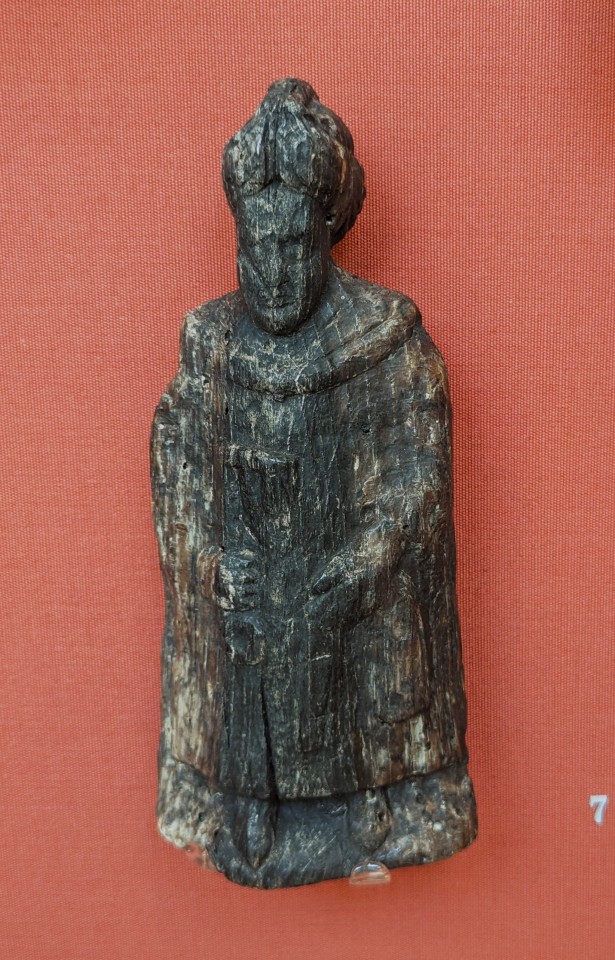
Oak Statuette of the Goddess Epona from Winchester, England dated to the 1st Century CE on display at the Winchester City Museum in Winchester, England
This small statue is thought to be the Gallo-Roman goddess Epona who was a protector of horses and goddess of fertility. While Epona's origins are from Celtic peoples the goddess proved to be very popular amongst the cavalry regiments in the Roman army. She was the sole Celtic diety worshipped in the city of Rome due to this.
Photographs taken by myself 2023
#art#archaeology#history#celts#celtic#england#english#ancient#roman empire#winchester city museum#winchester#barbucomedie
252 notes
·
View notes
Photo

Map of the Burgundian Migrations
The Burgundians were an East Germanic people, who originated from the island of Bornholm. Based on Archeology, they were related to the Bergio, a Germanic tribe from scania. Probably already in the First century BCE, the Burgundi would settle in Pomerania. With the arrival and slow migration of the Goths towards Oium/Scythia, the Burgundians would be divided into 2 groups - One Group went with the Goths to the Scythian Lands, forming the tribe of the Urugundi, which would become known for it's military skills after continious raids against the Romans under the Goths and Huns, and the Second Group staying in Poland and going southwest, probably in alliance with the Vandals in particular the Silingi.
The Burgundians would then slowly make their way to the Main river by the late 3rd Century and with them joined a group of Varisci, a small suebic tribe which inhabited northern Bavaria at the time. These Burgundians were accompanied by a group of Silingi, and the two would attempt to raid the Roman Empire, but were crushed in an unmentioned Battle and a large part would be resettled to Britannia Prima and Britannia Caesarienis. Together with the Silingi, Quadi, Hasdingi, Buri, Warini, Alans and a couple of Gepids, the Burgundians would cross the Rhine in 406 AD, but unlike the other tribes, would settle in the Lands located on the Middle Rhine and would, for a short time, occupy cities like Strassbourg, Speyer and Worms. They were then granted the status foederati and their Lands were limited to the City of Worms. However, not according to the plans of the Romans, the Burgundians would raid Upper Gallia Belgica. Aétius, fed up with this, called in Hun Mercenaries, which destroyed the Kingdom of the Burgundians on the Rhine and killed almost the entirety of the Burgundian Population.
Afterwards, they would be settled into Sapaudia, located in modern day western Switzerland and north-eastern France, in the year 443. They would form an important part of the Roman foederati, fighting in the Battle of the Catalaunian Plains, and would form an alliance with the Visigoths. In 456, the Burgundians would reform their Kingdom, and expand their Influence along the entire Rhone river. In 500 AD, the Kingdom would experience a brutal civil war, which would enlargen Frankish influence across the Kingdom. In 534 The last King of the Burgundians, Godomar II, would be defeated by Frankish King Childebert I and Chlothar I at the Battle of Autun, and their Kingdom would be integrated within the Empire of the Franks. Luckily for the Burgundians, their name would live on in Bornholm until the 11th Century, and the Name of Burgundy would be kept until today. The Burgundians were rapidly assimilated into Gallo Roman Society.
By: Rodnoverkind'/ Polbst Kortiz
51 notes
·
View notes
Text
The stunning gallos statue at Tintagel Castle in Cornwall said to be the birthplace of King Arthur.
Built half on the mainland and half on a jagged headland projecting into the Cornish sea, Tintagel Castle is one of the most spectacular historic sites in Britain.
reels # history # kingarthur # explore # visitengland # cornwall # castles # castleofinstagram # landscape # adventure
22Mh23
577 notes
·
View notes
Text
Fern's Cernunnos Deep Dive pt. 2

Aspects
Animals
The most obvious on here is of course Cernunnos' antlers. It ties him to the stag, and through this to the realm of animals. However, this is not the only evidence we have. Most who have written about Cernunnos, like Green, Ross, MacCana, and Strutynski, all name him "Lord of Beasts" or a variation on this theme. On the Gundestrup Cauldron, one of the most iconic images we have of Cernunnos, he is surrounded by animals. The depiction found of him in Reims show a rat on his antlers, and a stag and bull at his feet.
Forest and Hunting
From the depiction of animals, especially those of the stag and the boar, it is a natural step to associate Cernunnos with the forest. The stag is known in different European cultures as the King of the Forest, so an antlered God being a Lord of King of the forests and all that lives within, makes sense. On the Grundestup Cauldron we see prey animals, such as the stag, the fish, and the bull. As well as animals used for hunting, like the dog. This had lead many to believe that he is also the God of the Hunt, and even, through an admittedly flimsy connection with Herne, as the leader of the Wild Hunt. David Fickett-Willbar posits that there is not enough evidence of actual hunting to support Cernunnos as a Lord of the Hunt. On none of the depictions there are actual hunting attributes seen, only the dog, which in Celtic and Gallo-Roman depictions more often symbolized the underworld or Otherworld than hunting. That being said, in my experience Cernunnos is definitely a God of the hunt, being both the stag (the hunted) and the wolf (the hunter).
Cycle of Life and Death
Because of his aspect of both Hunter and Hunted, and his tie to animals, I also associate him with the cycle of life and death. Birth, to adulthood, to death, to decay, to rebirth. The cycle of nature, in animal and in plant life. A thing that is easy to observe in the deep forests.
Chthonic God
This ties into the cyclic aspect of life, but there are more things that tie Cernunnos to "within the earth" or the Underworld. He is often depicted with a horned serpent, which according to Marian Green depicts the calm nature of Cernunnos. However, in Greek myth we also have a ram-horned serpent called the Cerastes. This serpent would burrow itself within the earth, until only the two (or four) horns were visible. There it would wait for its prey to come by, leap out, and devour it. Because of the burrowing the Cerastes, and through it the horned serpent, are also tied to the Underworld, to which it was thought he was closer. The dog or hound is also often found on images of Cernunnos. Not just a symbol of the Hunt, the dog was also a symbol of the Underworld in the Germanic world.
Wealth
Another attribute that is carried often by Cernunnos is the torc. A torc is a neck ring, often made from bronze or gold. It is seen as a symbol of status, of divinity, and of material wealth. Later the torc was replaced with a bag of bowl of coins, another symbol of material wealth. Oxen were also a sign of wealth that appear on Cernunnos' engravings, also tying him to the wealth of towns and agriculture, rather than the forests. This is an aspect of Cernunnos that does not appear to me often, personally, but I do see the association.
Liminality
The liminal, the in between. Often we see Cernunnos depicted with a horned snake in his left hand, the snake meaning death and the left hand having negative connotations, and the torc in his right hand, the torc meaning wealth and the right hand a positive sign. Cernunnos places himself in the center by holding his hands at shoulder height. On the depiction of Cernunnos found in Reims we see the stag and the bull. Both symbols of wealth, but where cattle is a sign of domesticated wealth, the stag is a sign of the wealth of the wild. And once again, Cernunnos is depicted in the center. On the Grundestup Cauldron there are dogs, a sign of the hunter and death, and stag, a sign of the hunted and life, opposite of each other, both facing Cernunnos. Which brings us to the tricephalous, a Gaulic representation that is found for several Gods, amongst which Cernunnos. It is a figure with three heads, one facing forward, and the others facing to away from the center to the sides. Many interpretations can be made about facing the past and the future, death and life, the negative and the positive. But all places the center head, which is often most detailed or bigger than the others, in a more important position. Two statues of Cernunnos found in Atun and Condat, both are tricephalous and have removable antlers. On a personal note have also experienced Cernunnos as liminal when it comes to gender. He has helped me see my own liminality, and I often see him with different mixes of primary and secondary sex characteristics. Other non-binary devotees of Cernunnos have expressed similar experiences.
And with that we have reached UPG territory. The next ones are purely from my personal experience with Cernunnos, and, as far as I know, have no basis in the historic evidence that has been found.
the Otherworld
To me, Cernunnos is also a King of the Fae. The deep wild woods are reminiscent to the realm of the Wild Fae, and often entrances to this realm can be found there. As said above I associate him with the Wild Hunt, a procession of beings racing through the skies at certain times of the year. Sometimes these are beasts, sometimes these are fae, and sometimes these are witches. (Perchta's procession is children, but that is specific to her.) In the path that I walk witches and fae are very closely related, and through this Cernunnos is also seen as the Witch King. Teaching magic and journeying to and from other realms.
Bonfires
Another personal association. To me Cernunnos is closely tied to music, and to ecstatic dance, often around a bonfire. I have had several instances of dancing in front of a fire, and suddenly seeing myself on top of a mountain, a huge bonfire in front of me, and other witches and devotees sharing this moment of dance and passion. There is also the Dutch festival of Castlefest, which is a pagan- and fantasy festival. On Saturday they burn a wicker creature, which holds offerings made by the visitors. My offering is always for Cernunnos, whose presence I feel strongly at this festival. So this is another reason for this personal association.
[Masterpost]
40 notes
·
View notes
Text
Location: St. John's Hospital Status: Closed @lcdyinlecther
Zakaria pushed through Oxana's hospital room door, it was his first visit of the day but he had been here every day since the shooting. He was constantly back and forth having to check in with the rest of the MC and his daughter. "You ready?" He asked, with a small smile. "I bet you are excited to escape this crap place, but um..." He trailed off, "You are coming back to the club house with me. You can't stay at your apartment until we know his guy isn't coming back for a second shot, not after he threatened to finish off that serpent bitch." He stated, referring to Griffin Gallo and the group chat incident with Freddie.

40 notes
·
View notes
Text
Location: Griffin's condo Status: Closed @aspenlynch
The past few weeks had been rough, to say the least. Not only did he find out about his son, but his own father tried to get Ella to get rid of the babies. The untimely death of Vincenzo Gallo put Griffin in a further spin. He hadn't gotten the chance to resolve his feelings with his father before having to say goodbye. The funeral was quick and sweet, but the timing was unfortunate, leaving him little time to process any of the events that just took place, including thinking about his son.
On top of that, having a grieving toddler who missed her grampy was a lot to deal with. He never had to explain death before and that conversation was a hard one. Walking in the door from some meeting, he was happy to be back with his princess. "How was she?" Griffin asked as he kicked off his shoes and walked into the open-concept kitchen.

24 notes
·
View notes
Text
anyways gained an insane amount of followers today uhhhhhh... happy to have u all here & i was tagged by @leopardette & @t4tvampireisms & @orchidscurse to answer some questions so consider this my little introduction post ♥︎
last song: "far too young to die" - panic! at the disco. i don't even have an excuse for this. sorry. last book: "the dangers of smoking in bed" by mariana enriquez that i read for my book club!! last movie: red rocket (2021). this movie is very near and dear to me and i just want to know how sean baker got those shots on the boardwalk bullet bc that goddamn rollercoaster has given me severe whiplash every time i've been on it since i was ten years old. last show: south park</3 last thing i looked up: butters stotch. i wanted to look at pictures of my son :3 sweet/savory/spicy: right now since i'm on day one of my period all i want is anything smothered in chocolate. but i also a spicy tuna roll from my favorite sushi place. and nachos loaded with pulled pork and lots of pico de gallo. u understand. relationship status: looking for a toxic slavic man to completely destroy any desire i have for romantic companionship <3 if i don't find that i am content being a crazy cat lady for the rest of my life. looking forward to: rotting in bed all day tmrw with my heating pad and completely decimating my sleep schedule tonight :3 also i think i'm going to start trying to learn russian! current obsessions: heart shaped objects, building a relationship with my tarot deck, having at least one hour every night without a screen (i call this my "quiet hour") where i write or read or clean my room or complete a task i've been dreading, saving money, oatly barista edition oat milk, becoming more detail oriented, the concept of nostalgia, kurt cobain, roadkill philosophy, and leonard cohen's 1967 album "songs of leonard cohen"
tagging: @libertymai @orpheurdice @proteandisruptor @obsessioncollector and anyone else who wants to do this MWAH
11 notes
·
View notes
Text
Important Facts about Bealtaine from an Irish Celtic Reconstructionist



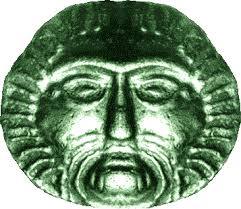
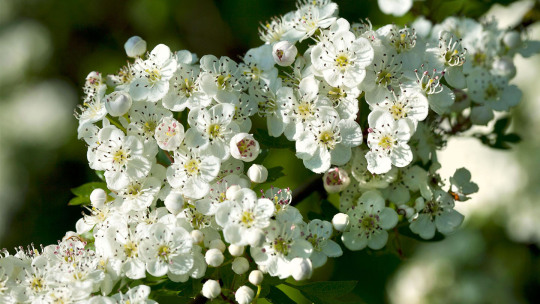
Spelling and Pronunciation
OI. Bealtaine (Bell-tin-Na) has more recently been written as I. Beltaine or Anglicized Beltane (Bell-tain). In the Cormac Glossary it is said to derive from the deity Bel and OI. 'Tene' meaning fire.
Dates
Most Reconstructionists celebrate Bealtaine on April 30th-May 1st, sundown to sundown. Iron age Irish (and other Celts) structured their days from sunset to sunset so while we now track this time as stretching over two days, they would have seen this period as one single day, being the first day of the month of May by the Gregorian calendar. Some Reconsructionists might prefer to celebrate by the Julian calendar which would place this holiday on May 13th-14th (by the Gregorian calendar), still of course from sundown to sundown. In the most traditional sense this holiday would have been celebrated when the livestock was moved from the winter grazing fields out to the summer grazing fields.
Importance in Mythos
Most mythological reference to this holiday comes in the form of the movement of peoples or invasions of peoples.
The mythological invasion of Partholon and his people occurred on Bealtaine and the plague that wiped them out also began on that date and lasted a week. The Tuath De Danann are said to have arrived on the island on Bealtine as well and lastly the Sons of Mil are said to have invaded on this date also (Macalister, 1940).
In later times when Christianity had made its mythologies the way of the land and the old deities were moved to the status of Fae this idea of movement and invasion seems to have persisted. Traditions hold that this date is a dangerous time for mortals as the aes sídhe are moving amongst the daoine sí and may stop by unsuspecting homes to ask for butter or perhaps some water, but if this request is granted they will steal the homes luck for the year.
I will make a note here that while the Cormac Glossary notes the deity Bel there is no Celtic/Gaelic deity of this name (though there is a Mesopotamian one) and this seems to cause a lot of confusion, especially when it comes to Wiccancentic ideas and articles. Cormac was likely referring to the Celtic/Gaelic deity Belenus NOT the Mesopotamian Bel. Belenus/Belenos was associated with the sun and healing and during the Gallo-Roman period was often noted to be the Gaelic Apollo. There is evidence to suggest that Belenus/Belenos was known throughout the Celtic/Gaelic world, though we don't have any specific information about how prominently he was worshiped in Ireland itself it is relatively safe to assume that the Iron age Irish would have known who he was.
Celebration Traditions
Like on Samhain, at the opposing 'end' of the year livestock were transitioned from one grazing area to another. While on Samhain, when the 'dark' half of the year begins and the livestock are moved in from summer grazing to winter grazing, Bealtaine is the opposite. It begins the 'light' half of the year and livestock are moved from the winter grazing out to the summer pastures. At both holidays to ensure healthy animals and protect them from any malicious factors great bonfires were built (most notably on the hill of Uisneach) and livestock would be driven between them.
There seems to be a traditional emphasis on the protection of homes, barns, livestock, peoples, and crops. Generally this seems to be a time when warding against ill luck for the community became a focus. Yellow, specifically yellow flowers (primrose, gorse or hawthorn blossoms), appear to have played a role in this as they have been used to decorate, but when exactly this tradition originated is unknown. The healing wells of Ireland and specifically the dew on the morning of Bealtaine have been thought to be important. Some traditions hold that the dew, when washed with will bring beauty, while others think if drank by the milk cows it would cause them to produce more, but again the origins of these traditions are relatively unknown.
Interesting History to take into Consideration
Given Bealtines long lasting history in Irish mythological tradition of being associated with mass movements of peoples and a need to protect ones family and community in this tumultuous time it is -possible- these ideas persist due to the movements (and possibly famines or plagues) during the "Megadrought" of the Bronze age (1250-1100 BCE). Most studies have focused on the effects of the Mediterranean at this time, but it is reasonable to assume the ripples of effects could have been felt strongly enough in Ireland to leave a lasting impression, especially since it is not outlandish to assume that people fleeing the Mediterranean area, which was no longer able to adequately sustain them, may have fled to the more temperate British Isles and passed on their trauma through oral tradition. This could possibly be backed up by looking at the etymology of 'Bel' not as referencing Beleus/Beleos but as referencing the Irish Balor (or perhaps they are different aspects of the same figure) who embodies not the life sustaining properties of the sun but the deadly and destructive ones. Balor balcbéimnech, 'Balor the strong smiter,' Balor birugerc, ' Balor of the piercing eye,' Balor mae Doit meic Néid, 'Balor son of Dot son of Néit.'
This is obviously only my personal opinion and can be taken or dismissed as one likes.
My Kofi
#celtic mythology#celtic reconstructionism#celtic paganism#celtic reconstructionist#celtic#Irish#irish mythology#irish reconstructionist#irish reconstructionism#irish paganism#beltaine#Bealtaine#Beltane#festival#fire festival#blackcrowing
274 notes
·
View notes
Text
OC: Paisley Gallos
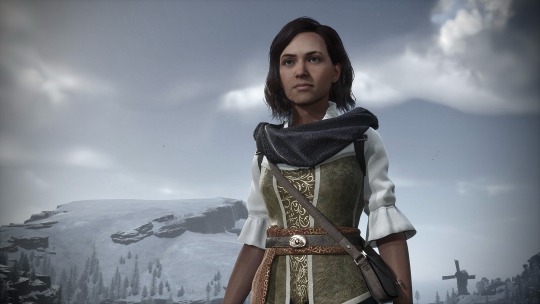
Basics:
Full name: Paisley November Gallos Nickname: Pais Gender: Female Species: Witch / Vampire Date of birth: December 14th, 1874 Nationality: Spanish-French, born in the Americas Blood status: Muggleborn Wand: Walnut, dragon heartstring, 11”, unyielding
Appearance
Hair colour: Dark brown / mahogany Hairstyle: Short, wavy Eye colour: Hazel Skin tone: Medium Height: 5’2” Body type: Average, slight muscle definition
Clothing style: Functionality takes priority; light-medium, but durable fabrics such as cotton and leather for ease of movement. Prefers more fitted clothing, especially when travelling or exploring outside the castle walls. Fond of worn denim; often wears her brother’s hand-me-down pairs when out of class.
Accessories:
Often carries a harmonica in her back pocket
Her father’s wristwatch, despite it always running a few minutes ahead
Other distinguishing features:
Three diagonal scars on the left side of her jaw (obtained while trying to escape from a vampire)
Two small birthmarks below her bottom lip
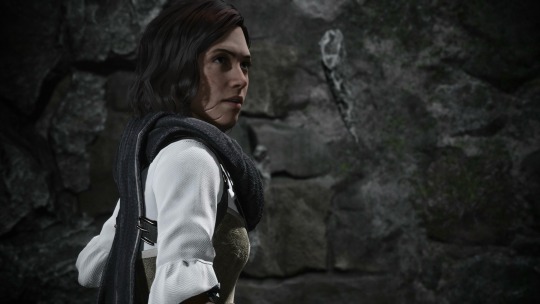
Personality
Traits: Intelligent, resourceful, clever, determined, crass, blunt, intuitive, curious, decisive, quick to anger, observant, goal-oriented, remorseful Likes: Early morning hikes, writing in a new notebook, solving problems, the ocean, strong coffee (with two sugar cubes), stargazing, foraging for minerals/rocks Dislikes: Perfume, wet socks, the afternoon sun, formal attire, dishonesty Hobbies: Fishing, metalsmithing (when out of school) Fears: The unknown, her own thirst (once she becomes a vampire)
MBTI: INFJ-A Zodiac: Sagittarius sun, Aquarius moon, Libra rising Temperament: Choleric Archetype: The Rebel Similar characters: Remus Lupin, Albus Dumbledore, Sam Winchester, Harry Callahan, Lisa Simpson, Han Solo, Max Mayfield, Jon Snow

Family/Friends
Father: Pierre - Muggle, Fisherman Mother: Rosalyn - Muggle, Teacher (Died in 1882 from scarlet fever) Sibling(s): Mathieu (age 19) Pet(s): Barred Owl, “Crispen” Friends: Sebastian Sallow, Ominis Gaunt, Garreth Weasley, Amit Thakkar, Natsai Onai
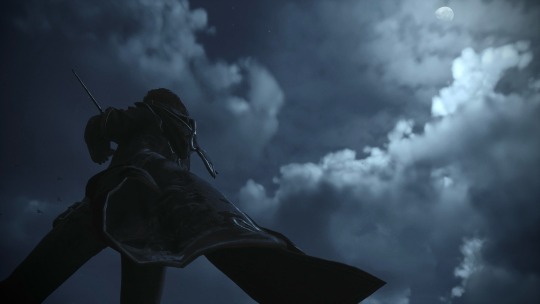
Magic
Boggart: Extremely thick fog, accompanied by a foghorn Patronus: Colossal squid Polyjuice: Turns crimson, tastes like spring water and copper Amortentia: Smoke, bergamot and clean, starched cotton Special abilities:
Fire-based offensive spells and charms
Non-verbal magical spells
(Once transformed into a vampire) can sometimes "absorb" a person's abilities after consuming their blood

Backstory
Born in Nova Scotia, Canada to immigrant muggle parents, Paisley grew up in a small fishing village just on the outskirts of a port city. Because of this, she spent many days on fishing vessels with her father and older brother, while her mother worked as a teacher at the schoolhouse in town. When she was eight, her mother fell gravely ill and unfortunately passed away from complications of scarlet fever. Her father, Pierre, often struggled to balance work obligations with raising Paisley and Mathieu, and more often than not her older brother was left responsible, which caused her to develop a great deal of independence.
Being from a non-magical family, Paisley's magic was a startling discovery. It revealed itself when, while arguing with her brother, she made a milk bottle spontaneously explode in frustration. The following morning, two members from the Ministry for Magic arrived, explained magical abilities to her and her family, and promptly enrolled her in the Ilvermorny School of Witchcraft and Wizardry.
She was sorted into the Horned Serpent house, based on her high level of intelligence and ambitious, goal-oriented mindset.
Paisley excelled in her studies, her hunger for knowledge consistent, and while graduating from her fifth year she was recognized for her advanced magical comprehension. She was hand-selected by the Minster for Magic himself to take part in an accelerated graduate program at Hogwarts School for Witchcraft and Wizardry, and with great excitement she transferred at the start of her sixth year. Having researched the Hogwarts houses before her arrival, she anticipated being sorted into Ravenclaw... however the mysterious rumours about the Slytherin house fostering several dark wizards in history captivated her curiosity, and thus the sorting hat placed her there instead.
Soon after arriving at Hogwarts, she was captured by a well-known criminal, who subsequently bit her and changed her into a vampire against her will. The details around this, and why she was selected specifically, are still unknown...
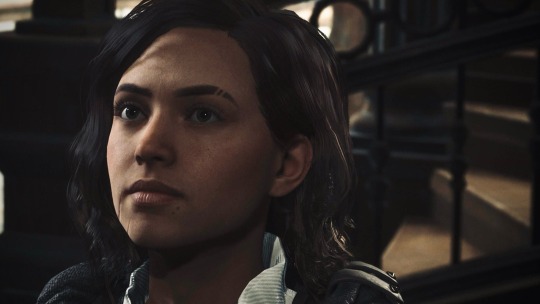
Academics
Best subject: DADA Favourite subject: Astrology Favourite teachers: Professor Fig, Professor Sharp Worst subject: History of Magic Least favourite subject: Divination, Theory of Magic Least favourite teacher: Binns Quidditch: N/A
As a student:
Prioritizes her studies as much as possible; she is aware of the once-in-a-lifetime opportunity to study at Hogwarts and does not take it for granted.
Sometimes misses classes without explanation, particularly on sunny days.
She is always happy to help fellow classmates, however, she is wary of many. This only increases once she has been turned.
Mostly keeps to herself; has few, close friends, with whom she places a great deal of trust.

Future
Career: Researcher or Archivist Naturally, Paisley is drawn to a career path that allows her the opportunity to further her education and learn something new. Her ambitions focus on filling her brain with as much information as possible, so taking up a job as a Researcher or Archivist for the Ministry is very much in her wheelhouse.
Spouse: TBD Children: TBD
Special thanks to @hazyange1s for letting me follow their OC layout 🤍
#hogwarts legacy oc#hogwarts oc#hogwarts legacy#hogwarts legacy mc#hogwarts legacy fanfic#ominis gaunt#amit thakkar#sebastian sallow#garreth weasley#natsai onai#the stratagem strain#oc profile#paisley gallos
36 notes
·
View notes